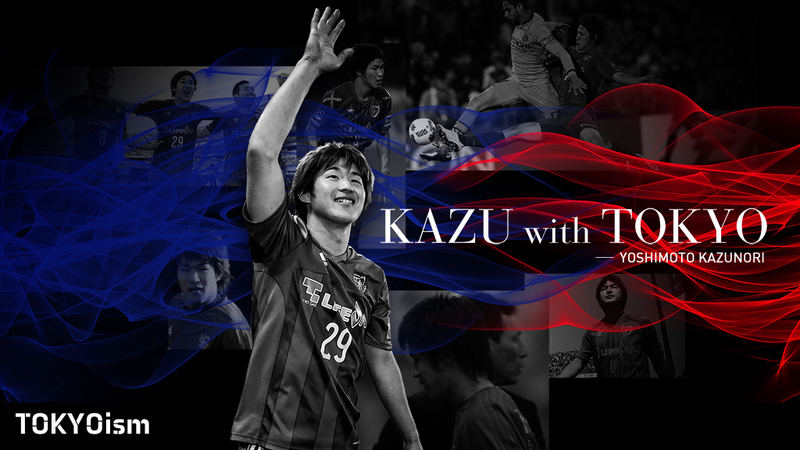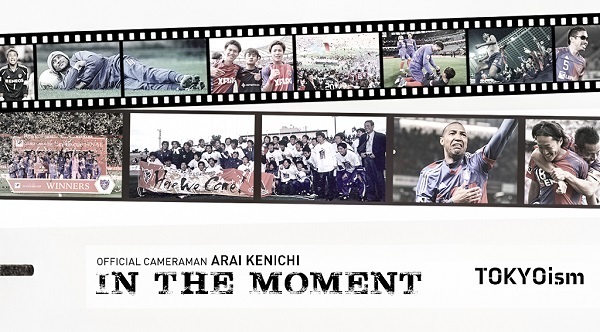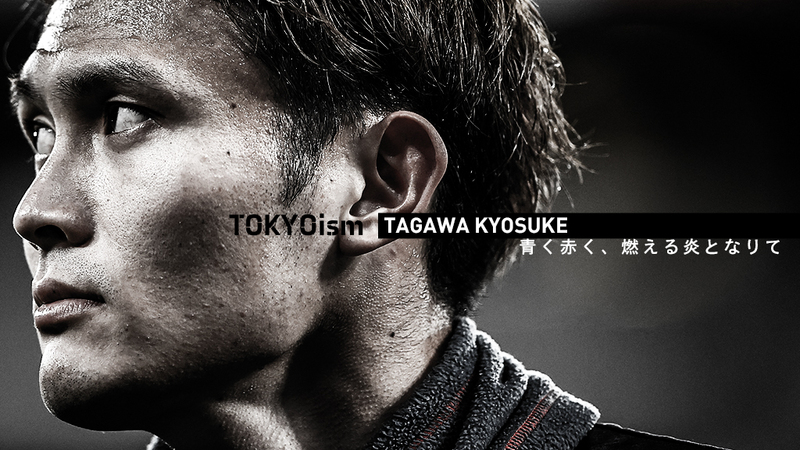The story of a man who continued to fight for playing opportunities and finally grasped his position in his second life. His starting point was always the blue and red emblem.
KAZU with TOKYO.
When Kazunori YOSHIMOTO's life intersects with FC Tokyo's history, their souls resonate and create a passionate emotion.
Final Battle of the 2020 Season
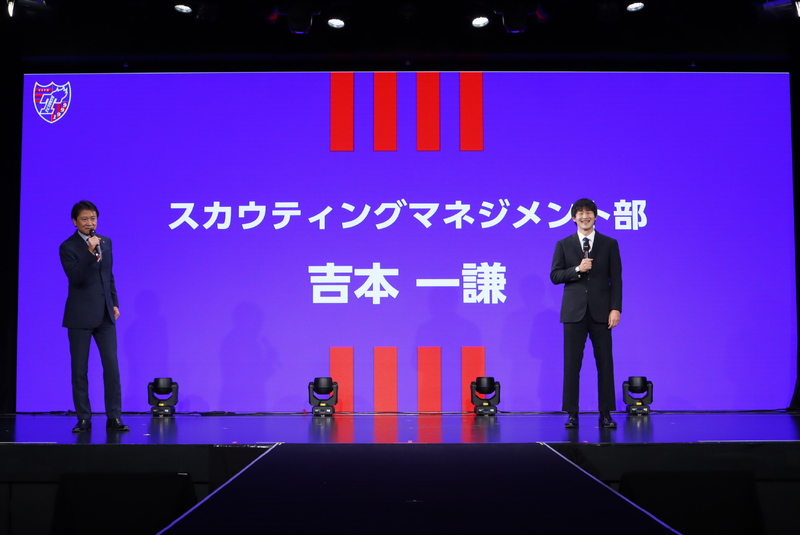
On January 25, 2021, at an online live broadcast from the venue in Ikebukuro, there was a young man in a suit who seemed unusually nervous and stumbled over his lines while giving a speech. From this season, the strengthening department has been divided into the top team management department and the scouting management department. Kazunori YOSHIMOTO was assigned to the latter. This man, who retired at Shimizu S-Pulse, returned to his former club FC Tokyo as a new scout after crossing the moon.
"I was nervous because I didn't have the image of being in front of the staff. If I were a player, it would be part of my character to fool around in front of people. But it's different for staff. I was nervous while worrying about how to behave."
It was a tumultuous year. I joined Shimizu on a full transfer on July 29, 2019, but the majority of my time was spent battling injuries.
In September 2019, he suffered an injury and was diagnosed with a 4-month recovery period due to a medial meniscus injury in his left knee. He underwent a second surgery in February of the following year, but his recovery was not going well, leading to another surgery in June.
After that, he worked hard on rehabilitation in Shizuoka Prefecture, but his knees, which had been subjected to intense play and surgery for many years, were in a terrible state. He decided to retire in a state where he could not perform, and announced it on December 9th. Not only FC Tokyo, but also FC Gifu, Mito Hollyhock, Avispa Fukuoka, and Shimizu's fans and supporters were sorry to see him go.
However, his season did not end here.
On December 16, in the final home game of the J1 Sec. 33 Vegalta Sendai match, he was scheduled to play for the last 2 minutes and participate in the retirement ceremony. However, that was not the only appearance he made.
"(Hiroaki HIRAOKA) coach was considerate and used me at the end of the Sendai match. I was grateful and thought it was over. But in the same position, there was an injured player in the Sendai match, and the coach said to me, 'I want you to go (to the next match). You are the best for winning.' I said, 'No, I played in the previous match, so I'm good. I'm satisfied enough.'"
Yoshimoto was determined, being told "It's up to you to make the winning choice."
"Even if my legs break in the end, I will give everything I have."
On December 19th, Yoshimoto, who started in the J1 Sec. 34 match against Gamba Osaka at Panasonic Stadium Suita, played for 71 minutes and contributed to the 2-0 shutout victory, ending the season on a high note.
"I didn't think I could play as well as I did. I was really scared, and I was also thinking about what would happen if we lost 5-0 in the end (laughs), but I felt like my efforts were recognized and I was able to win."
Shouting, raising and lowering the line, putting your body on the line - it was a 70-minute period where I made sure to stick to my principles no matter what the outcome.
"When I thought this was the last time, tears came out when I entered, and when I was substituted, both the coach Yoshiyuki SHINODA and the manager were crying (laughs), and I couldn't hold back my tears either. Ah, there was a feeling of being truly over."
And so, Yoshimoto's life as a professional soccer player ended with the hot tears of passionate men. A healthy retirement that would make one laugh when talking about it later. "In my mind, the last game was the best play I could have made. So I have no regrets... I gave it my all and ended it with a laugh," he said.
What I achieved through my hard work was not only victories and great plays, but also a job after retirement. In order to stay true to my principles, I first went to FC Tokyo to give my retirement speech and was offered a job to discover new J-League players for the newly established FC Tokyo Promotion Department. And so, my final year led up to the "mumbling" speech on January 25, 2021.
Academy, Supporters, Club Love
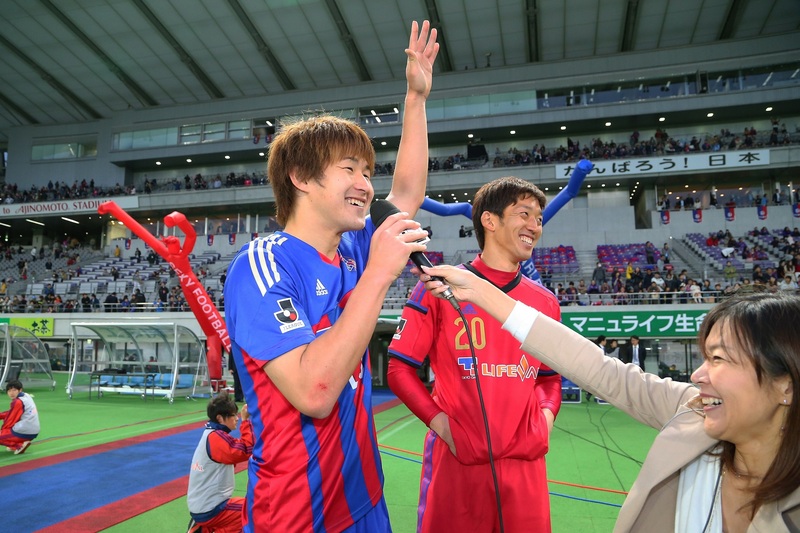
Let's turn the clock hands back even further. Yoshimoto started playing soccer at JACPA Tokyo FC, where Nakano Ryotaro, Hironaga Ryotaro, and Omori Rio were also members. Later, the coach said, "I passed because you were the fastest and tallest." At first, he didn't play in the games. He just enjoyed chasing the ball with everyone else.
"I wasn't a quiet kid in elementary school (laughs). I liked to have fun with everyone, and I also liked to play pranks with my friends. I think there were a lot of people who became friends that way."
When I joined FC Tokyo U-15 as a junior high school student, I naturally became the captain. I was chosen by the coach and a sense of responsibility grew within me. As a member of the academy, I started imitating the supporters while playing soccer.
"When I joined the academy and went to watch Tokyo (top team) matches, the coach at the time took me to the center of the goal end and I cheered with the supporters. When I went to watch matches of other grades, we started doing it on our own next to the field. We said "Let's cheer!" (laughs) and sang together, and we had fun while cheering. People in Tokyo's goal end like to play pranks, right? I learned the fun of cheering and sometimes got scolded for doing those chants (laughs), and I also learned the feelings of the people who support us. It was all thanks to the coach."
There are not many clubs that stand out as much as this one with its supporters and academy. And Yoshimoto, who caused a stir in the academy, aspired to the top and burst out like a supporter, was truly the blue and red club's prodigal son.
"(Tokyo has its own unique color,) I think that's a good thing, and I really feel that there are people who support us, including players from the academy. So, I wanted to do my best for the people who call out to us and buy our uniforms."
The attitude of fighting together has been developed since then, even in terms of playing.
"I've never known defeat, and in my second year of junior high school, at the first national tournament, the Nike Premier Cup, we won and I realized that we were really strong. Even though I didn't know much about soccer, we still won. We hardly ever lost until our final year. I started to think that I had to win. Because we won the first time, I always had the mindset that we couldn't lose to anyone. When I was in my second year of junior high school, I thought I was the best player in Japan. In my third year of junior high school, I played in a top-level practice match and performed well, and that's when I thought I would become a professional. Looking back now, I'm grateful that the team officials were training me with the future promotion to the top in mind."
During my academy days, I always thought that I couldn't lose to Verdy, who constantly competes in Tokyo.
"It felt like we were playing to defeat Verdy in the U-15. We were always told not to lose to Verdy. Now, there are many strong teams, but Verdy was a special presence."
The determination to win with grit, the feeling of not being able to lose to anyone but Verdy. And the consciousness of supporting teammates, the love for the club, and the desire to connect with fans and supporters were all shaped during the academy era. FC Tokyo, which raised Yoshimoto, became the starting point of his soccer career.
Birth of "Zen Keshi" and Thoughts for Juniors
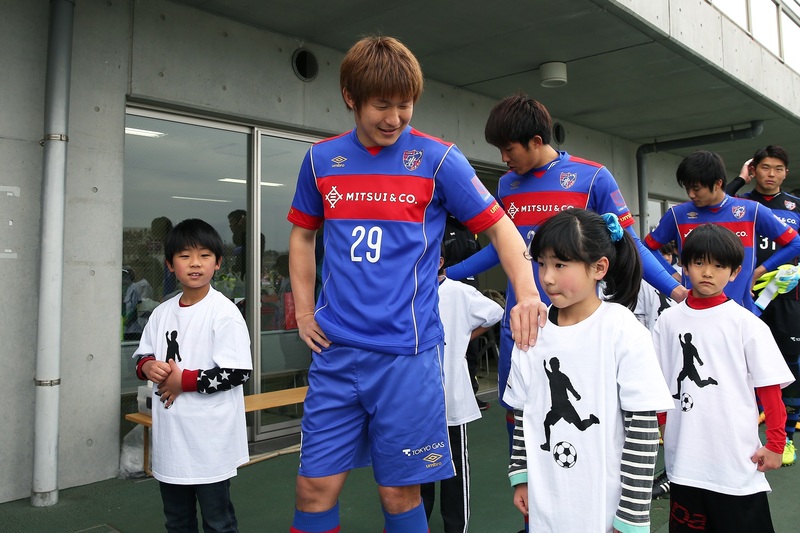
The style of play known as "zen-keshi", where players throw themselves to defend, it is uncertain when it started. "It may have been the case since a long time ago," it is somewhat vague.
"I was just doing what I thought was natural. By putting pressure on the opponent until the end and sliding, the chances of conceding decrease. To put it more simply, just by showing your feet, things can change. In the end, we may be pushed away, but just by making our footsteps heard, we can have an impact on the opponent's actions. When asked where this mindset originated from, I remember my coach in Gifu telling me the same thing, and looking back, it may have been what shaped me while playing in J2 matches."
As he repeatedly moved back and forth between Gifu and Mito on a temporary transfer, Yoshimoto's defensive style gradually took shape. It was named "Zen Keshi" by his academy graduate junior.
"Mita (Hirotaka) started saying 'zenkeshi' (laughs). 'You've erased all the shooting courses! It's a complete erasure!' he said. Then everyone started saying it (laughs)."
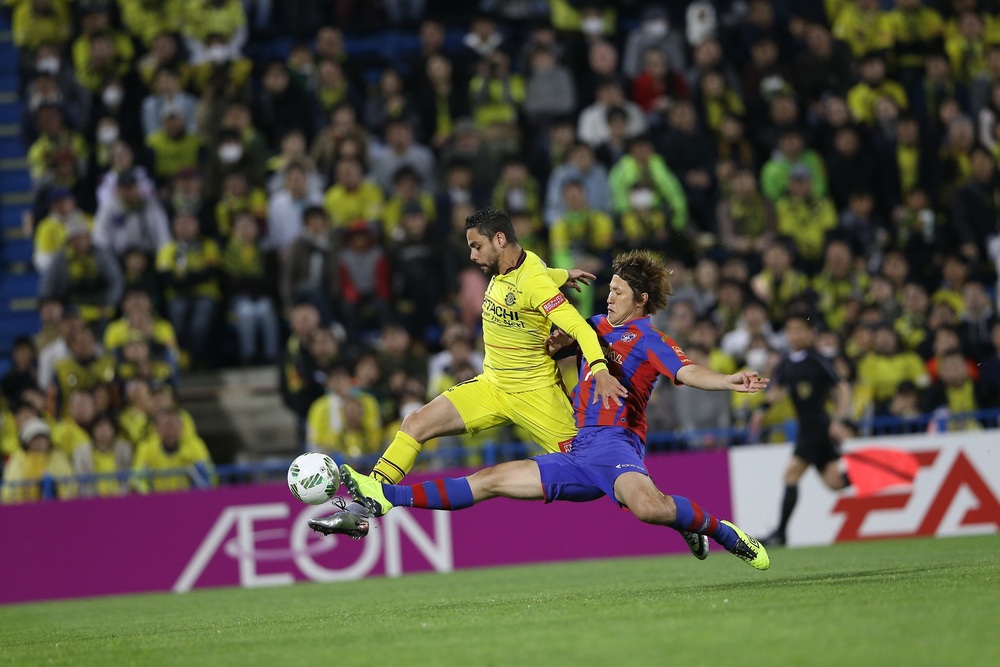
The word spread on its own and became established without anyone realizing it. Yoshimoto has never said "erase all" himself. It was a word that spread naturally from the players' mouths. In later years, Makoto OKAZAKI said that he was influenced by Yoshimoto's stopper-like play style, which was completely different from his own. In response, Yoshimoto chuckled and asked, "Is that so?" It seemed doubtful whether his junior really thought that way from the bottom of his heart.
"I'm glad you say that... but it's not like I did anything special, I just gave some advice and talked occasionally."
If we believe in Okazaki's words, he either grew up watching Yoshimoto's back or was naturally influenced by the same air as Yoshimoto.
"What I remember is when we went on a trip with J3. At that time, the overage (OA) players basically had their own rooms. But for some reason, I ended up sharing a room with Makoto OKAZAKI (laughs). 'Huh!? Aren't we all supposed to have our own rooms?' I was flustered. And on top of that, Makoto went to bed really early (laughs), so I was like, why do I have to worry about Makoto――"
Okazaki, who did not lose his own pace, seemed to have a strange personality from Yoshimoto, who was a year younger, and was always puzzled about how to communicate. In his difficult-to-read mind, Okazaki must have been grateful to Yoshimoto. Yoshimoto was kind to the younger player and cared for his juniors.
"Mako is the player who surprised me the most with his growth speed. He basically played in every J3 match and even when we played together in J3, there were changes within a few weeks. I realized that players can grow so much in such a short period of time, which is amazing. In the end, I played soccer with Okazaki player at S-Pulse and I feel like we have a special connection. I care about him and sincerely hope he does his best. Okazaki player is a really cute junior."
The job of the player's association president who improved the communication
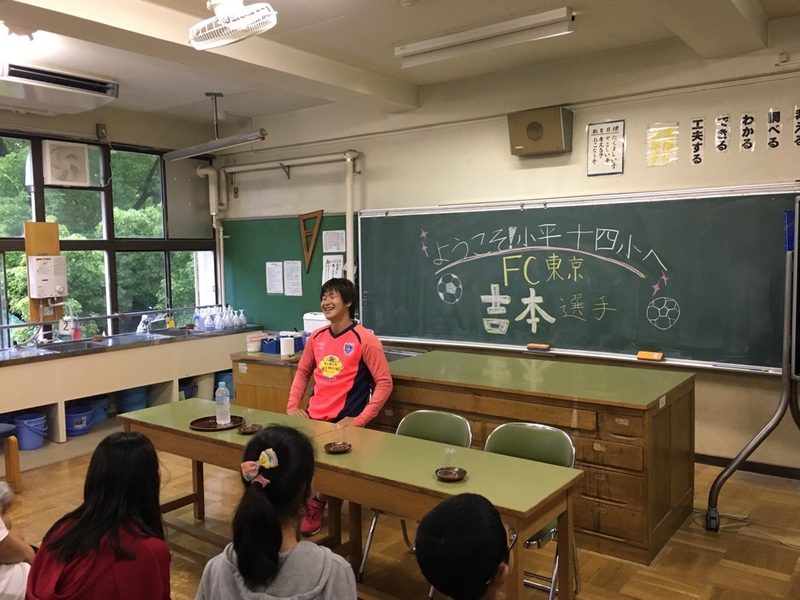
Yoshimoto, who dramatically increased his playing time from the 2014 season, became the face of Tokyo. He served as the player representative in the 2015 season and graced the cover of the booklet "Won't you come to Kodaira?" as the Kodaira City Tourism and Town Development Ambassador in 2017. Recognized for his play through a complete overhaul, Yoshimoto was also recognized as a man of Tokyo in terms of his character. The sense of responsibility cultivated in his developmental years and his natural sociability have now become apparent in the professional field.
"Being able to play in the game and being recognized by those around me, I gained confidence and my words became more convincing. More people started to listen to me. Through this process, I became more conscious of what I can do to improve the team. How can we make the team stronger? How can we create more unity within the club? As an academy graduate, I felt a responsibility to lead the team and I think it was great that I was able to build a cooperative relationship with everyone."
Yojiro TAKAHAGI, who joined in the 2017 season, says that the background behind the functioning of the players' association was the contribution of then-chairman Yoshimoto.
"Player Takahagi has knowledge of various teams and has also experienced winning, so I wanted to incorporate various things. He has been consulted with more often and has helped me a lot."
Once a month, we hold a meeting between the players and the club to confirm the situation. We have been able to communicate better and the club and team have become more united. For example, if a player requests to be able to eat dinner at the club house after practice, we will convey that to the club and if it can be realized, Yoshimoto will tell the players, "Definitely eat it," and make sure it is enforced. "After saying it, let's do it properly ourselves and confirm the obvious things as human beings again," Yoshimoto says.
"We were very conscious of improving the communication within the team in order to make it a positive thing."
15 minutes earlier than usual, I had the players come early and conveyed the requirements. We decided on the location of the parking lot and set rules in the players' association - from this time on, Yoshimoto was a man who could also do work off the pitch.
Repeated transfers. Gifu, Mito, Fukuoka, Shimizu

However, as he matured, ironically, his playing opportunities decreased. In the later years of his career, Yoshimoto once again sought a battlefield outside of FC Tokyo. In the summer of 2018, he joined Fukuoka on a loan transfer, and a year later, he joined Shimizu on a permanent transfer. However, even with these two transfers, his stance remained unchanged from when he departed for Gifu and Mito.
"Until about 25 years old, I had only signed one-year contracts and played with the thought of being fired. I also had the desire to return to Tokyo and perform well, but I also wanted to prove myself here and continue playing soccer."
Yoshimoto, who had no experience playing throughout the season, learned how to maintain his condition while playing every week at his first loan destination, Gifu. It was not just about physical condition, but also about how to approach each game with determination. By risking his life and putting pressure on himself every day, he was able to grow mentally. I am still proud of achieving the Emperor's Cup Best 8 with the motivation to leave my name in the club's history. Yoshimoto also met his wife, who worked at the training gym in this area, and later got married. "Well, it was a good transfer," Yoshimoto says with a particularly gentle smile as he tells this story.
In Mito, he scored the winning goal in the J2 Sec. 29 match against Oita Trinita, his first game after transferring. However, he suffered an injury in the following week's Sec. 30 match and was diagnosed with an 8-month recovery period, ending his challenge after only two games. Nevertheless, his encounter with manager Tetsuji HASHIRATANI has been a valuable asset to him up to the present. The same can be said for his encounter with manager Masami IHARA in Fukuoka. As a former center back during his playing days, their influence as professional managers who take on responsibility has been significant.
"Meeting with two coaches who have served as captain for the Japan national team, Mr. Hashigaya and Mr. Ihara, was truly significant. Both of them are kind, passionate, and have helped me a lot. I learned a lot from them."
When I transferred to Fukuoka, I still had a contract with Tokyo. If there was no offer at the timing when the contract expired, it would lead to retirement immediately. In order to prove that I can play at a professional level as I accumulate achievements, I needed a stage to showcase my abilities.
"I have never transferred to Gifu or Mito with the intention of returning to Tokyo. I also went to Fukuoka with the intention of burying my bones there, and I faced soccer with the mission of leaving my mark on the team I transferred to. Even now, I feel sorry for not being able to promote Fukuoka to J1 in 2018."
Always prioritizing the club I belong to at that time, I have shown love for each and every club - maintaining that priority and sticking to my principles.
"I have never thought about leaving Shimizu S-Pulse for Tokyo. If S-Pulse were a club that said 'don't wear blue and red', I would follow that."
The difference between Gifu, Mito, Fukuoka, Shizuoka and Tokyo is that they are clubs that have been nurtured from the academy. It's like having a home. When you transfer to a new team, there are new relationships to build and meeting new people enriches your life.
And once again, KAZU intersects with TOKYO
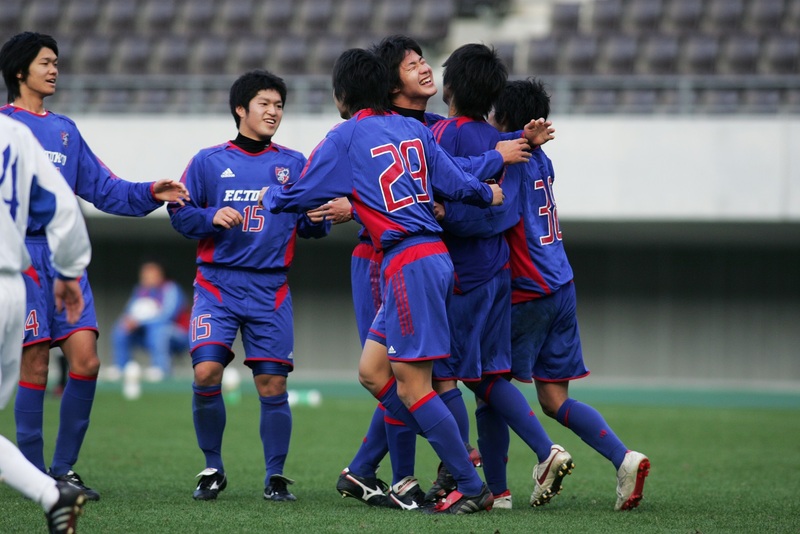
Why did Yoshimoto, who has swam in the world of professional soccer not only in Tokyo but also in other places, start his second life at FC Tokyo?
"The first thing I have to do is announce my retirement in Tokyo."
In order to be consistent, Yoshimoto had this in mind. In Gifu, Mito, Fukuoka, and Shimizu, he had already told them, "If you need help because you didn't greet Tokyo, please let me know." Even so, perhaps he was still worried, as Shimizu's GM Kiyoshi OKUMA would call every few days and ask, "What happened?" He would say, "If something happens, come tell me," and his voice could be heard from the other end of the phone.
"I never thought I would retire with S-Pulse and say goodbye to Mr. Okuma. When I joined the Tokyo Academy, Mr. Okuma was the head coach of the top team, so I thought it was fate."
After the final match of the Levain Cup on January 4, 2021, I greeted FC Tokyo President Naoki Oogane. The position offered to Yoshimoto, who had no intention of becoming a coach due to his knee pain, was the Scouting Management Department. President Oogane said, "I want you to discover and nurture a second Yoshimoto," and Yoshimoto accepted it.
"Honestly, even if I'm not here, the team will probably keep going. But the president created a place for me to work, so I thought I wanted to work for the club in return. Until then, I hadn't honestly decided on my career path. But because the president said so, I asked on the spot and talked to my direct supervisor, Yutaka Ishii, and signed a contract."
When it was decided that I would become a scout, I consulted with Naotake HANYU, who had also worked in the same position. He was like an older brother to me, and we had a close relationship where we would discuss things over meals. After that, I consulted with many people, including Naohiro ISHIKAWA, and my approach to the scouting position became clear within Yoshimoto.
"What I value the most is comparing myself to the academy players. Even though they may be better, it's different to bring in players from other places for the sake of my own work and achievements. If there are no players better than the academy players, I think it's okay to say 'there are none' and have confidence in that as a professional."
Director Ishii and scout Koike both have experience as players during their time at Tokyo Gas, and are familiar with the club's history. On the other hand, scout Hiroshi Tsukamoto, who has been in the coaching field for a long time, has experience teaching players like Shuichi Gonda and Hirotaka Mita at the school. Born and raised in Tokyo, Yoshimoto respects his colleagues who have spent a long time here, and has begun the fight to make Tokyo a stronger and more beloved team as a staff member.
"Why do you love Tokyo? It's the same as loving your own children and parents."
Remembering the blue and red soul that was packed in my chest, "KAZU" starts a new career here in Tokyo.

Kazunori YOSHIMOTO Profile
Graduated from FC Tokyo Academy. Made professional debut with FC Tokyo in 2007 and retired in 2020.
Currently belongs to the FC Tokyo Scouting Management Department after retirement.
Text by Masaru Goto
photo by Kenichi Arai
